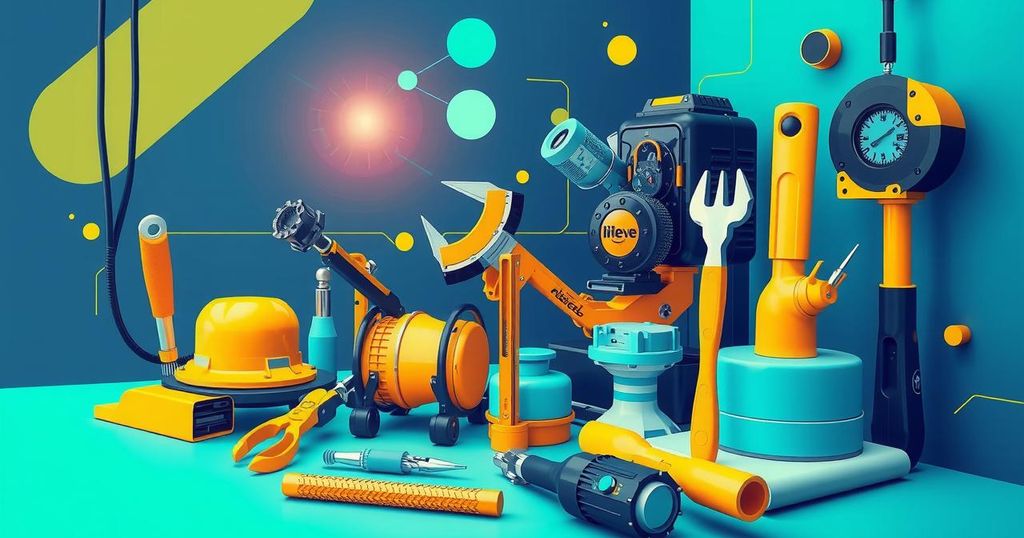AI
Tech
AHR, ANNE BOYCOTT, ARTIFICIAL INTELLIGENCE, BECCA ST, BECCA STAMEY, CARSON BROWN, DANNY BRAUGHT, INNOVATION, JOHN MESENBRINK, LMH, LOKAL MEDIA HOUSE AGENCY, MARKETING, MARY, MARY - ANNE BOYCOTT, REFRIGERATION TECHNOLOGIES, SURGE DIGITAL MARKETING, SUSAN FREW, TECHNOLOGY, TIM WARD, VENTURE CAPITAL
Nina Oliviera
0 Comments
Harnessing AI in Trades: Transformative Lessons from AHR 2025
Artificial intelligence is fundamentally reshaping the plumbing and mechanical trades by enhancing efficiency, automating tasks, and promoting business growth. At the 2025 AHR Expo, discussions focused on AI’s role in workforce adaptation, operational efficiency, and customer engagement, highlighting the need for contractors to embrace technology while maintaining the human connection crucial to their success.
Artificial intelligence (AI) has transitioned from being a mere buzzword to an influential entity reshaping the plumbing and mechanical trades. Its rising prominence in the skilled trades emphasizes efficiency, automation, and business growth, urging skeptics to elevate their perspectives and fully embrace its potential.
At the 2025 AHR Expo, I participated in an engaging panel discussion featuring notable industry leaders Mary-Anne Boycott and Susan Frew. Moderated by John Mesenbrink and Tim Ward, we delved into AI’s transformative role in workforce adaptation, automation, and enhancing overall business efficiency—key topics for contractors aiming to remain competitive in a rapidly evolving market.
Beyond the main stage, I led a discussion titled “The Connected Contractor,” focusing on how AI-driven tools and social media are catalyzing success for the contemporary tradesperson. Joined by experts like Becca Stamey and Carson Brown, we explored the significance of reputable online presence. Contractors were urged to recognize how AI influences not only operational efficacy but also brand identity and customer connectivity.
AI’s footprint in the skilled trades is undeniable, as contractors adopt real-time diagnostics, predictive analytics, and automation to streamline operations. A key highlight from AHR was how tools like Meta smart glasses facilitate hands-free job site documentation, enabling technicians to connect directly with their teams without cumbersome photo exchanges. This revolutionizes communication and troubleshooting efficiency.
AI-enhanced estimating software is reshaping project planning, reducing costs by automating processes like material list generation and pricing. A compelling example from Susan illustrated a manufacturer saving $300,000 yearly by optimizing logistics through AI, showcasing tangible financial benefits that can be achieved with its implementation.
The financial successes of AI extend beyond estimation, empowering contractors through automated scheduling, fleet management, and predictive maintenance to enhance profitability. Smart home systems leveraging AI are transforming resource management like water usage and energy consumption, urging plumbers and contractors to adapt swiftly to tech advancements in maintenance techniques.
During our “The Connected Contractor” panel, we acknowledged that AI’s impact stretches into digital marketing and customer relations. Contractors utilizing AI-powered social media tools are witnessing enhanced visibility and lead generation. As digital engagement becomes vital in building customer trust and brand loyalty, it’s clear that a robust online presence is essential for survival.
However, the rise of AI also presents challenges, particularly for business owners unsure of where to start. Susan Frew emphasized the importance of solid foundational processes—organizing data, documenting workflows, and monitoring key performance indicators—as critical steps towards AI integration and optimization.
The predictive capabilities of AI, analyzing historical data for insights, remain one of its most untapped advantages. By digitizing workflows, contractors can foresee equipment failures and offer tailored services, ultimately elevating the customer experience while minimizing emergencies.
AI does not aim to replace the human touch vital in skilled trades; rather, it enhances it. The core of success lies in balancing personal interaction with automated systems. AI functions as an additional instrument, ensuring that while technology advances, communication and trust-building with clients remain paramount.
Looking ahead, AI’s integration into the trades sparks crucial dialogues around energy demand, regulation, and workforce evolution. The burgeoning need for new cooling technologies presents opportunities for plumbing and mechanical professionals to participate in developing the nation’s evolving energy sector.
Discussions at AHR shed light on AI governance and privacy concerns, urging tradespeople to remain informed about forthcoming policies affecting data and customer protection. Although worries about job displacement linger, the consensus is that AI will create rather than eliminate roles, enhancing worker capabilities instead.
Reflecting on the AHR dialogues, it’s evident that AI isn’t a distant concept but a present reality on job sites. Contractors who leverage AI tools, engage in social media growth, and optimize workflows are preparing to lead the industry’s transformation towards a future filled with possibilities. Success hinges on adaptability, continuous learning, and embracing innovation while valuing the hands-on expertise central to the trades.
In conclusion, AI is revolutionizing the skilled trades landscape, enhancing operational efficiency and creating new business opportunities. By adopting AI tools and integrating them with traditional practices, contractors can improve customer engagement and trust. The future lies in striking a balance between technology and the personable touch of skilled trades, ensuring progress while preserving core values of the industry.
Original Source: www.contractormag.com




Post Comment